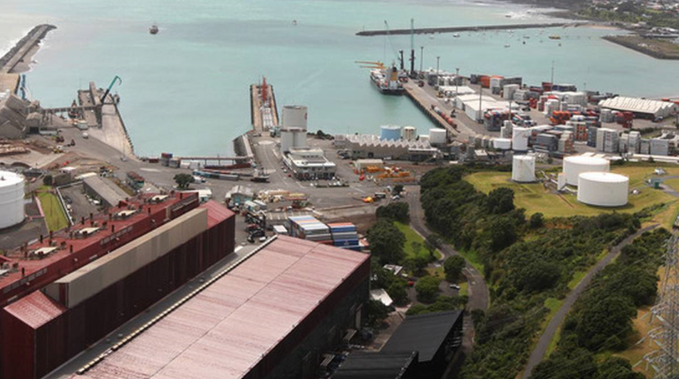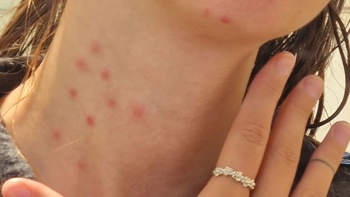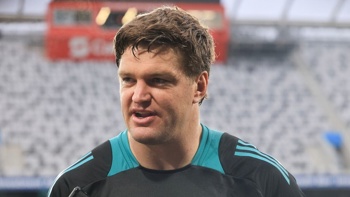
Health officials are edging closer to solving the mystery of how an Auckland engineer caught coronavirus. Science reporter Jamie Morton explains.
He was the 1530th case of Covid-19 reported in New Zealand.
But to experts, he's the hero who may have saved the country from a new community outbreak by acting swiftly.
We still don't know much about this man - a 27-year-old marine electronics technician understood to work at Albany-based Wright Technologies.
We know more about what he did – and how a regular day on a docked ship led to a major public health response.
That vessel was a Liberian-flagged cargo ship named the Sofrana Surville, which arrived at the Ports of Auckland just before noon on Monday, October 12.
It had sailed from Papua New Guinea, to the Solomon Islands, to Brisbane, to Tauranga and then to Auckland.
On Tuesday, October 13, the engineer, garbed in a mask and gloves, stepped aboard the Sofrana Surville and got to work.
He wasn't the only person on deck that day.
Eight crew members from the Philippines also filed on to the ship, having flown into the country a few days earlier, and spending a brief period of isolation in Auckland's Novotel hotel.
The Sofrana Surville then set sail for Noumea, before heading to Brisbane.
The engineer, meanwhile, headed to New Plymouth, where he checked into the Devon Hotel, just north of the city centre.
/cloudfront-ap-southeast-2.images.arcpublishing.com/nzme/UFW2OBJAMCEPMAT5PMFDTAKDZY.jpg)
The engineer stayed at New Plymouth's Devon Hotel on Tuesday night. (Photo / Supplied)
When he checked out early the next morning, on Wednesday, October 14, he was likely already infectious.
He headed straight to his next job at Port Taranaki, to work on the Vanuatu-flagged ship Ken Rei.
Probably figuring he'd stay another night in Taranaki, he checked into the Quest Hotel, in the heart of New Plymouth.
But, in a decision that likely saved officials a much larger contact tracing operation, he opted against staying.
Instead, he drove back to Auckland, where he spent the following day at home.
On Friday, October 16, he went to work, but, feeling sick, phoned Healthline and then sought a Covid-19 test.
By that point, when the country's focus was on the last campaign day of the general election, the Ken Rei and its 21 crew was on its way to its next destination, the Port of Napier.
At about 6.11pm on Saturday, October 17, less than an hour before polls closed, Health Minister Chris Hipkins received a call from director general of health Dr Ashley Bloomfield.
The engineer's test had come back positive.
New Zealand had a new community case.
In the throes of the election, Hipkins didn't think it was appropriate to let the country know straight away – or whether doing so would have been counter to strict election day rules.
The man, meanwhile, had moved to the Jet Park Hotel quarantine facility in Auckland.
In Taranaki, his potential contacts with others had been surprisingly few.
Within two days of being notified, officials had identified just 13 potential close contacts – and only four of them close ones.
He hadn't come near other guests at The Devon or used any of the facilities, nor had he spent any time out and about in the city.
In Auckland, meanwhile, two workmates – one of whom had also worked on the Sofrana Surville on October 12 - picked up the virus.
One was only in contact with the technician for a mere three minutes; he was tested on Sunday and returned a negative result, but, by Tuesday, began feeling sick.
The first New Zealanders heard of this fresh chain of infections was the morning after the election, when the news cycle was still dominated by Labour's landslide victory.
Before Bloomfield called an unusual press conference at 1pm that Sunday, the Herald had already obtained a letter from the Auckland Regional Public Health Service revealing a person had been diagnosed with a "notifiable, infectious disease".
/cloudfront-ap-southeast-2.images.arcpublishing.com/nzme/PIW7Z5LQWZCOZL65ZI4DOAPO3M.jpg)
The director general of health Dr Ashley Bloomfield has praised the engineer's actions. (Photo / Mark Mitchell)
The director general stepped to the podium, thanked journalists for coming in on a Sunday, then calmly announced: "There is a new community case of Covid-19 to report in New Zealand today."
Before detailing the case, he stressed that it had shown the country's contact tracing systems were working well, that there was a clear line of investigation into its source, and – more importantly – that it had been caught early.
"I do want to say that the person, because of the nature of his work, had taken a number of precautions to limit his contacts with others – and his actions have been very helpful in terms of limiting the risk of further spread."
The Ken Rei, which was to have arrived in Napier that afternoon, never made it to dock – and instead remains anchored in Hawke's Bay for a 14-day isolation period.
The Sofrana Surville was similarly kept from entering Brisbane, and is currently anchored off Australia's Sunshine Coast.
Officials' assumptions that it's where the infection began have been strengthened after news two crew members have tested positive.
Meanwhile, authorities have been closely tracing another potential flare-up point: at The Malt bar at Greenhithe.
/cloudfront-ap-southeast-2.images.arcpublishing.com/nzme/7X5WMPG6Z4RV7CPWNW7FED56S4.jpg)
The Malt, a bar in Greenhithe, Auckland, has become a new focus of the public health response. (Photo / Sylvie Whinray)
That was where one of two workmates spent two and a half hours on Friday night – a time he would have been "right at the beginning" of his infection, Bloomfield said.
About 60 to 80 people were understood to be in the bar at the time – all of whom have been urged to get tested and self-isolate.
Pub owner Kevin McVicar told Radio New Zealand he was alerted to the situation when a ministry official came in on Wednesday night as his phones hadn't been working.
"I was sceptical [at first] because it happened quite quickly and because the news was always reporting that we've had no cases for a while."
Like Bloomfield, health experts have hailed the technician's decision to get tested as soon as became symptomatic.
Associate Professor Siouxsie Wiles called him a "hero" who'd followed the strict precautions that came with a job considered to be high-risk for Covid-19.
"Importantly, he immediately got tested and went into isolation. This will have limited the time he was in contact with others in the community while infectious," she said.
"I'd like to thank the worker for getting tested so fast, as this will have limited the risk of the virus spreading any further."
Otago University epidemiologist Michael Baker said the case could have otherwise led to a much larger outbreak.
But it also raised fresh and troubling questions about New Zealand's border system.
An obvious one was why the Sofrana Surville's crew had only had to isolate for a few days after flying in – and none had been tested while here.
Bloomfield said crews in transit weren't routinely tested, and the ministry was now reviewing measures around ports and ship workers.
/cloudfront-ap-southeast-2.images.arcpublishing.com/nzme/4S56CJFUXPH3ERTREXR3VKY4KM.jpg)
The Auckland Regional Public Health Service staff at Greenhithe, where a pop-up testing station has been set up. (Photo / Sylvie Whinray)
"There's clearly a gap there," Auckland University associate professor of public health Collin Tukuitonga told RNZ.
"Even if you contain these people coming in from overseas, but obviously there's potential interaction with people either on the ship or on the wharf, that's why I would've thought that testing would be mandatory."
What rules are there for ship crews?
Under our current restrictions, no one aboard a ship docking at its first port of call in New Zealand can step ashore until they meet the requirements for the length of stay they've been at sea.
The one exception is for crew heading home: if they have permission, they can leave the ship but must go direct to the airport, as there's essentially no shore leave allowed.
"The other risk is when port workers go on the ship to load, resupply the galley, inspect the ship, or whatever work it might be," explained Phil Shoemack, the medical officer of health with Bay of Plenty-based Toi Te Ora Public Health.
"The requirement for those port workers is they must wear personal protective equipment - mask and gloves - when they're on the ship.
"As much as possible they must prevent themselves from getting closer than two metres for more than 15 minutes with any of the crew."
"Sometimes that's not possible and they have to get closer than that, so we can't eliminate the risk.
"But now we have routine swabbing for all port workers. Also, any port worker turning up to work is under clear instructions that should they have any symptoms they're to turn around and go home."
Baker suggested a logical reason why we'd heard little about the risk from sea ports throughout the pandemic – the worker was the first case definitively linked to one.
That was despite New Zealand's ports receiving up to 100 visiting vessels each week, he said.
Incidentally, within a day of announcing that case, the ministry disclosed another: a crew member aboard the IVS Merlion, which recently arrived at the Port of Tauranga.
That crew member returned a weak positive Covid-19 test, with a high CT value which indicated an old infection, and was unconnected to the port worker's one.
"Seaports have received less attention than airports, but are obviously area of vulnerability for New Zealand, as this case appears to show," Baker said.
While there was a good chance the current infection arrived with the Sofrana Surville's crew by air, Baker said recent studies had shown how the virus could enter countries through ports.
Maritime Union of New Zealand said the case highlighted a need to limit the number of international ports here, and implement domestic coastal shipping on a "hub and spoke" model.
The union's national secretary, Joe Fleetwood, said the risk of having international ships carry domestic freight between all of the country's ports had been raised by the union repeatedly.
"Right now nearly all of our domestic sea freight is carried by international ships running international crews who are not covered by New Zealand law," he said.
"It means that every single one of our ports is an international border point and it puts our members and the public at risk."
Fleetwood argued there should be two ports on both islands that receive international shipping, and all other cargo should be securely shifted by New Zealand-flagged vessels.
Shoemack figured such an arrangement wouldn't be technically difficult, and would offer some limit on the number of port workers on ships.
"But they might be on the ships for longer. So you win some, you lose some in that respect," he said.
"There would also be another consequence in lost revenue for the closed ports and port workers left without a job to do."
/cloudfront-ap-southeast-2.images.arcpublishing.com/nzme/ITYSU7VPUW3AZCTA7AEX6NVT4Y.jpg)
Bay of Plenty-based medical officer of health Dr Phil Shoemack. (Photo / Stephen Parker)
Shoemack pointed out that New Zealand's greatest border risk still remained our airports, given the larger volumes of people coming through them, and straight from other countries in short time-frames.
"Whereas people coming in by ship have been sailing for at least few days, and most of the ships arriving here have come from places more distant - in which case they've been at sea for many days."
Whatever issues need to be fixed – and however the virus again got loose in New Zealand – Baker said we could be certain of one thing.
The careful actions of one person likely just saved the country another Covid-19 headache.
"This case also did all the right things in terms of seeking testing as soon as he developed symptoms."
Take your Radio, Podcasts and Music with you









